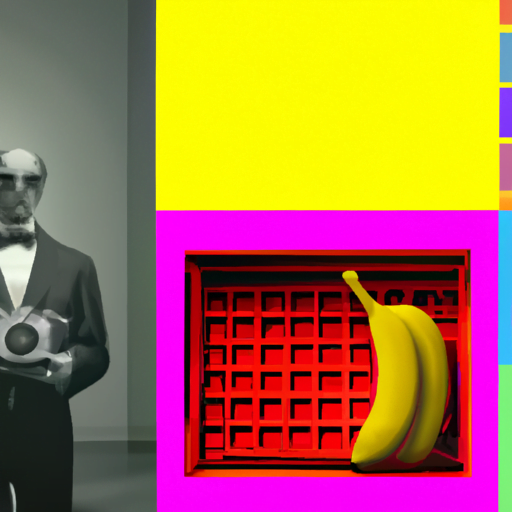
-
Table of Contents
- The Art of Visual Storytelling through Graphic Design
- What is Visual Storytelling?
- The Importance of Visual Storytelling in Graphic Design
- Techniques for Visual Storytelling in Graphic Design
- 1. Use of Visual Hierarchy
- 2. Incorporation of Symbols and Metaphors
- 3. Consistent Visual Style
- 4. Use of Typography
- 5. Sequential Storytelling
- Case Studies: Successful Examples of Visual Storytelling
- 1. Nike’s “Dream Crazy” Campaign
- 2. The New York Times’ “The Displaced” Project
- The Impact of Visual Storytelling: Statistics and Research
- Summary
The Art of Visual Storytelling through Graphic Design

Graphic design is a powerful tool that allows us to communicate ideas, emotions, and stories visually. It combines art and technology to create compelling visuals that capture the attention of the audience. One of the most effective ways to engage viewers and convey a message is through visual storytelling. In this article, we will explore the art of visual storytelling through graphic design, its importance, and how it can be effectively utilized.
What is Visual Storytelling?
Visual storytelling is the art of conveying a narrative or message through visual elements. It involves using images, illustrations, typography, and other design elements to create a cohesive and engaging story. By combining visuals with text, designers can evoke emotions, communicate complex ideas, and captivate the audience.
The Importance of Visual Storytelling in Graphic Design
Visual storytelling is a powerful tool in graphic design for several reasons:
- Engagement: Visuals have the ability to capture attention and engage viewers more effectively than plain text. By incorporating storytelling elements into graphic design, designers can create a more immersive and memorable experience for the audience.
- Emotional Connection: Stories have the power to evoke emotions and create a connection with the audience. By using visual storytelling techniques, designers can tap into the emotional aspect of human psychology and create a deeper impact.
- Memorability: Visuals are more likely to be remembered than plain text. When information is presented in a visually appealing and narrative-driven manner, it becomes easier for the audience to retain and recall the message.
- Brand Identity: Visual storytelling can help establish and reinforce a brand’s identity. By consistently using specific design elements, colors, and typography, designers can create a visual language that reflects the brand’s values and personality.
Techniques for Visual Storytelling in Graphic Design
There are several techniques that graphic designers can employ to effectively tell a story through visuals:
1. Use of Visual Hierarchy
Visual hierarchy refers to the arrangement and prioritization of visual elements to guide the viewer’s attention. By using size, color, contrast, and placement, designers can create a hierarchy that leads the viewer through the story in a logical and engaging manner.
2. Incorporation of Symbols and Metaphors
Symbols and metaphors can add depth and meaning to a visual story. By using familiar symbols or creating new ones, designers can convey complex ideas or emotions in a simple and relatable way. For example, a heart symbol can represent love or compassion.
3. Consistent Visual Style
A consistent visual style helps create a cohesive and recognizable story. By using consistent colors, typography, and design elements, designers can establish a visual language that reinforces the narrative and brand identity.
4. Use of Typography
Typography plays a crucial role in visual storytelling. Different fonts, sizes, and styles can evoke different emotions and convey different messages. By carefully selecting and arranging typography, designers can enhance the storytelling aspect of their designs.
5. Sequential Storytelling
Sequential storytelling involves presenting a series of visuals in a specific order to create a narrative flow. This technique is commonly used in comic books, infographics, and animations. By breaking down a story into smaller, digestible parts, designers can guide the viewer through the narrative.
Case Studies: Successful Examples of Visual Storytelling
Let’s explore some successful examples of visual storytelling in graphic design:
1. Nike’s “Dream Crazy” Campaign
Nike’s “Dream Crazy” campaign featuring Colin Kaepernick is a powerful example of visual storytelling. The campaign used a combination of powerful imagery, typography, and a compelling narrative to convey a message of empowerment and social justice. The visuals and storytelling elements resonated with the audience, sparking conversations and creating a lasting impact.
2. The New York Times’ “The Displaced” Project
The New York Times’ “The Displaced” project is an interactive storytelling experience that combines photography, video, and text to tell the stories of three refugee children. The project effectively uses visuals to create empathy and raise awareness about the refugee crisis. By immersing the audience in the stories through a combination of media, the project creates a powerful and memorable experience.
The Impact of Visual Storytelling: Statistics and Research
Research and statistics further highlight the effectiveness of visual storytelling in graphic design:
- A study by the Social Science Research Network found that people remember 65% of information when it is paired with relevant visuals, compared to only 10% when presented with plain text.
- According to a report by HubSpot, content with relevant images gets 94% more views than content without visuals.
- Research conducted by the University of Minnesota found that visuals are processed 60,000 times faster than text by the human brain.
Summary
Visual storytelling is a powerful technique in graphic design that allows designers to communicate ideas, evoke emotions, and create memorable experiences. By utilizing techniques such as visual hierarchy, symbols, consistent visual style, typography, and sequential storytelling, designers can effectively convey narratives and engage the audience. Successful examples like Nike’s “Dream Crazy” campaign and The New York Times’ “The Displaced” project demonstrate the impact of visual storytelling. Research and statistics further support the effectiveness of visual storytelling in capturing attention, enhancing memory retention, and creating emotional connections. As graphic designers, mastering the art of visual storytelling can elevate our designs and make a lasting impact on the audience.
